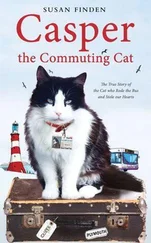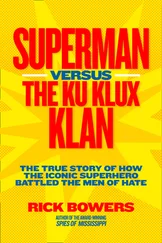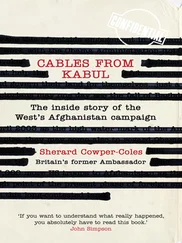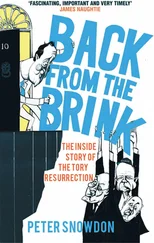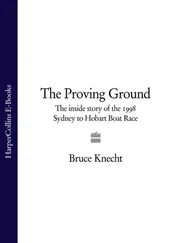Andrew Sorkin - Too Big to Fail - The Inside Story of How Wall Street and Washington Fought to Save the FinancialSystem--and Themselves
Здесь есть возможность читать онлайн «Andrew Sorkin - Too Big to Fail - The Inside Story of How Wall Street and Washington Fought to Save the FinancialSystem--and Themselves» весь текст электронной книги совершенно бесплатно (целиком полную версию без сокращений). В некоторых случаях можно слушать аудио, скачать через торрент в формате fb2 и присутствует краткое содержание. Жанр: Старинная литература, на английском языке. Описание произведения, (предисловие) а так же отзывы посетителей доступны на портале библиотеки ЛибКат.
- Название:Too Big to Fail: The Inside Story of How Wall Street and Washington Fought to Save the FinancialSystem--and Themselves
- Автор:
- Жанр:
- Год:неизвестен
- ISBN:нет данных
- Рейтинг книги:4 / 5. Голосов: 1
-
Избранное:Добавить в избранное
- Отзывы:
-
Ваша оценка:
- 80
- 1
- 2
- 3
- 4
- 5
Too Big to Fail: The Inside Story of How Wall Street and Washington Fought to Save the FinancialSystem--and Themselves: краткое содержание, описание и аннотация
Предлагаем к чтению аннотацию, описание, краткое содержание или предисловие (зависит от того, что написал сам автор книги «Too Big to Fail: The Inside Story of How Wall Street and Washington Fought to Save the FinancialSystem--and Themselves»). Если вы не нашли необходимую информацию о книге — напишите в комментариях, мы постараемся отыскать её.
Too Big to Fail: The Inside Story of How Wall Street and Washington Fought to Save the FinancialSystem--and Themselves — читать онлайн бесплатно полную книгу (весь текст) целиком
Ниже представлен текст книги, разбитый по страницам. Система сохранения места последней прочитанной страницы, позволяет с удобством читать онлайн бесплатно книгу «Too Big to Fail: The Inside Story of How Wall Street and Washington Fought to Save the FinancialSystem--and Themselves», без необходимости каждый раз заново искать на чём Вы остановились. Поставьте закладку, и сможете в любой момент перейти на страницу, на которой закончили чтение.
Интервал:
Закладка:
Shafir told the men that a deal “might feel like a stretch,” but he thought there was an opportunity to remove a good deal of cost from both firms, which was, after all, the baseline logic behind any corporate merger.
Despite Shafir’s optimistic spin on a potential deal, Chammah was well aware that an agreement of this magnitude would result in a bloodbath, with probably hundreds if not thousands of layoffs. He also knew that the upside in any merger could prove elusive.
Then, for a good hour, the bankers went over the numbers and the various assets that Lehman owned to determine if there was anything among its holdings that Morgan Stanley might want. But as the discussion went on and papers were passed back and forth, it became clear there was no common ground. Chammah then acknowledged that he didn’t think Morgan’s board could move quickly enough to be of any real assistance to Lehman in any case—a signal that everyone in the room recognized meant that he believed that Lehman Brothers was simply too far gone.
Soon after McDade’s team left, Gorman looked solemnly at his group, as if to remind them, It could be us, but said only, “We just watched guys who are staring into the abyss.”

Shortly after sunrise, Greg Curl walked across the plaza of the Seagram Building, the thirty-eight-story masterpiece of architectural modernism and a Park Avenue landmark. He entered the lobby, checked his watch, and waited for his go-to adviser to arrive.
Curl, Bank of America’s point man for a possible Lehman Brothers deal, had flown from Charlotte to New York with a team of over one hundred executives on Wednesday night to begin their diligence at Sullivan & Cromwell’s Midtown conference center. To assist them Curl had enlisted Chris Flowers, a private-equity investor whose specialty was the arcana of the banking industry. The two made for an odd couple, given that Curl was a Bank of America veteran with a low profile and had few Wall Street connections, while Flowers was a fast-talking, and often profane, former Goldman Sachs banker whose daring deals often landed him in the headlines.
But as Curl had considered what to do about Lehman, his first thought was that he wanted Flowers at his side. Flowers could read a balance sheet in less than thirty seconds and was bold enough to offer an articulate and well-reasoned judgment of it. He had left Goldman in the late 1990s and started his own private-equity firm to invest in banks, a business in which he had done very well indeed, personally pocketing some $540 million from an investment in Shinsei Bank in Japan. He was regularly listed as one of the wealthiest men in America, and when he purchased a town house on the Upper East Side for $53 million, it set a record for Manhattan real estate.
Curl trusted very few bankers, but Flowers was an exception. He particularly admired Flowers’s dispassionate, no-bullshit approach to deal making—and to life. In 2007, just before the credit crisis hit, they had bid together on Sallie Mae, the student-loan company. They soon realized the deal was a mistake, and for the rest of the year, they worked together to try to undo it. Curl hadn’t held the Sallie Mae investment against Flowers, largely because Flowers was ultimately able to get them out of it by invoking an escape hatch in the merger agreement, with ensuing legal fireworks.
Flowers could be useful for more than just providing advice, as Curl knew that he might be eager to invest in Lehman alongside Bank of America. Curl thought that he might even be willing to take Lehman’s riskiest assets.
When he had sought out Flowers just twenty-four hours earlier, Curl had found him in Tokyo, where Flowers had been in the middle of a board meeting of Shinsei. “You’ll want to look at Lehman Brothers, and we want to look at it in partnership with you,” Curl told him. “Can you get back to New York for this purpose?” Flowers hardly needed persuading and quickly arranged for a car to the airport to make the fourteen-hour flight back to Manhattan.
When Flowers arrived, clearly wearing the jetlag on his face, he had brought along Jacob Goldfield, a fellow Goldman alum. (Goldfield happened to be the banker depicted in Roger Lowenstein’s When Genius Failed as surreptitiously downloading all of Long-Term Capital Management’s information into a laptop during Goldman’s attempt to assist the beleaguered firm; it was Goldfield whom Alex Kirk of Lehman had mentioned in his nervous comment to Fuld about providing information to Goldman Sachs a day earlier.)
Goldfield also knew Lehman well—he had helped Hank Greenberg examine the firm back in the spring when Greenberg was part of a group of investors who bought $6 billion of common and preferred shares.
On the flight over, Flowers had studied Lehman’s second-quarter report from the day before and had focused on what he knew was going to be the big discussion point: the value of Lehman’s real estate assets. Could they possibly be worth $25 to $30 billion?
Curl, Flowers, and Goldfield set up operations in a conference room that Sullivan & Cromwell provided, laid out with coffee and pastries.
This was going to be a long day.

With twenty-four hours to mull over Lehman’s SpinCo plan, Wall Street analysts turned against it—and the firm—en masse. They blasted out skeptical e-mails to clients on Thursday morning, adding to the weight that was already dragging down Lehman’s shares. The stock price had ended the previous day down 7 percent at $7.25; it was about to sink even lower.
“Management did not successfully put to rest the issues that had been pressuring the stock,” William Tanona, an analyst at Goldman Sachs, declared in his e-mail.
Michael Mayo, an analyst who had kept a buy rating on Lehman shares since April 2007, sent out an even bleaker prognosis, given his concerns about the possible fallout as credit-rating firms grew more bearish about Lehman: “The change in rating agency posture is an unexpected negative that may create a distressed sale situation.” In other words, a fire sale could be next. His buy rating was summarily removed.
Guy Moszkowski of Merrill Lynch was also grim on the subject of Lehman’s sale prospects, writing that the firm could be forced to accept a “take-under”—Wall Street parlance for a takeover at a price below where a company’s shares are trading.
Even analysts who believed that Lehman was basically sound were beginning to see that it had become a matter of perception trumping fundamentals: Lehman’s tumbling stock price inflamed the market’s fears, creating a self-fulfilling prophecy that was forcing Lehman to find a buyer, and fast.
As Wall Street analysts seemed poised to write the epitaph for Dick Fuld’s firm, the only person to come to his public defense was John Mack, the man who Fuld had hoped would be his merger partner. Mack was quoted in the Times that morning as saying, “He is as feisty as ever, but there is no question this is wearing on him, as it would wear on anyone.”
In private, however, Mack had just delivered shattering news in a phone call to Fuld: He didn’t believe there was a good reason for Morgan Stanley to move forward with the talks.
However, there were still signs of life. Tim Geithner confirmed to Fuld that Barclays was indeed interested in bidding for the company, even though they had not contacted Fuld directly, and gave him Diamond’s phone number in London.
Читать дальшеИнтервал:
Закладка:
Похожие книги на «Too Big to Fail: The Inside Story of How Wall Street and Washington Fought to Save the FinancialSystem--and Themselves»
Представляем Вашему вниманию похожие книги на «Too Big to Fail: The Inside Story of How Wall Street and Washington Fought to Save the FinancialSystem--and Themselves» списком для выбора. Мы отобрали схожую по названию и смыслу литературу в надежде предоставить читателям больше вариантов отыскать новые, интересные, ещё непрочитанные произведения.
Обсуждение, отзывы о книге «Too Big to Fail: The Inside Story of How Wall Street and Washington Fought to Save the FinancialSystem--and Themselves» и просто собственные мнения читателей. Оставьте ваши комментарии, напишите, что Вы думаете о произведении, его смысле или главных героях. Укажите что конкретно понравилось, а что нет, и почему Вы так считаете.



